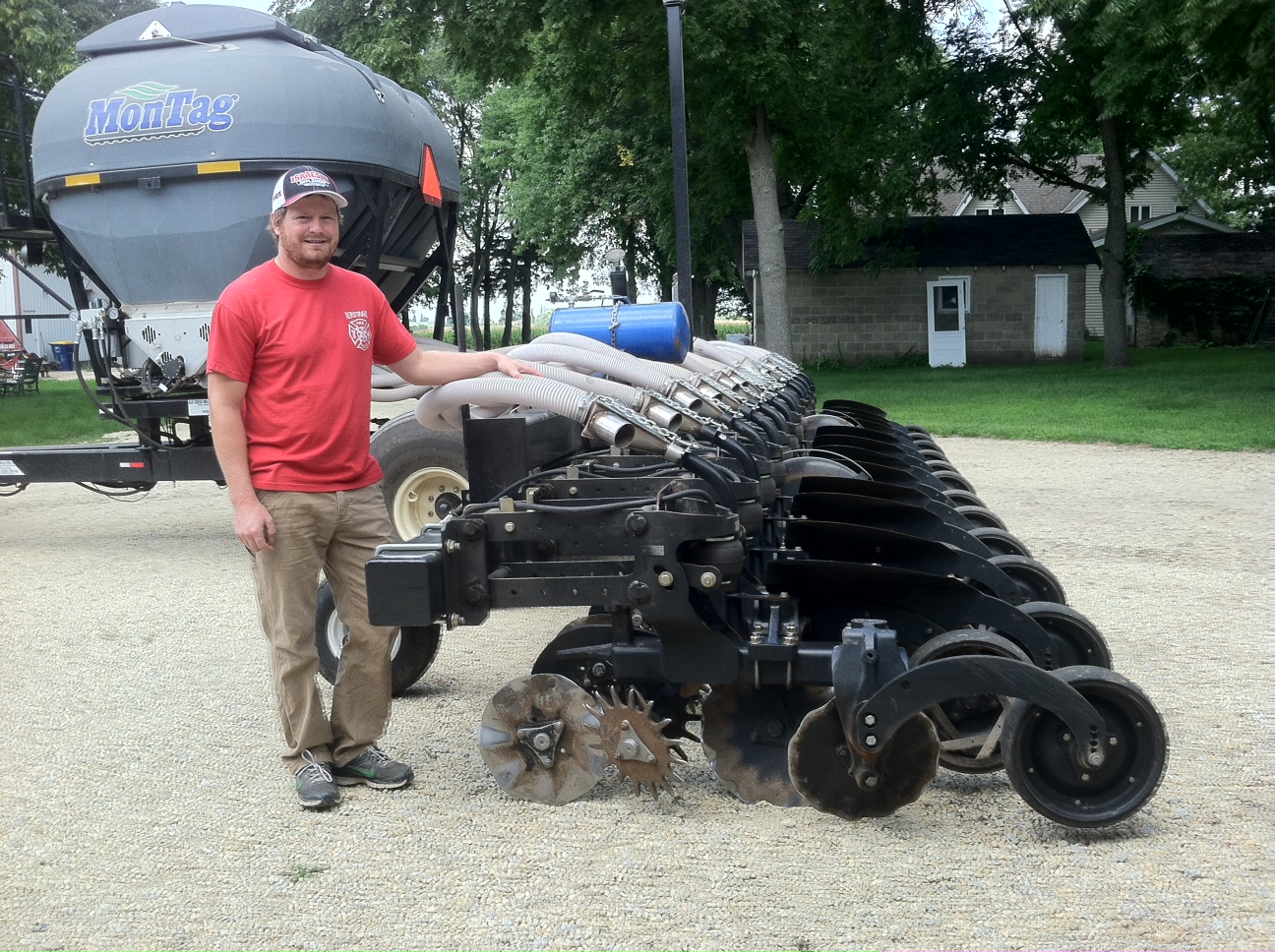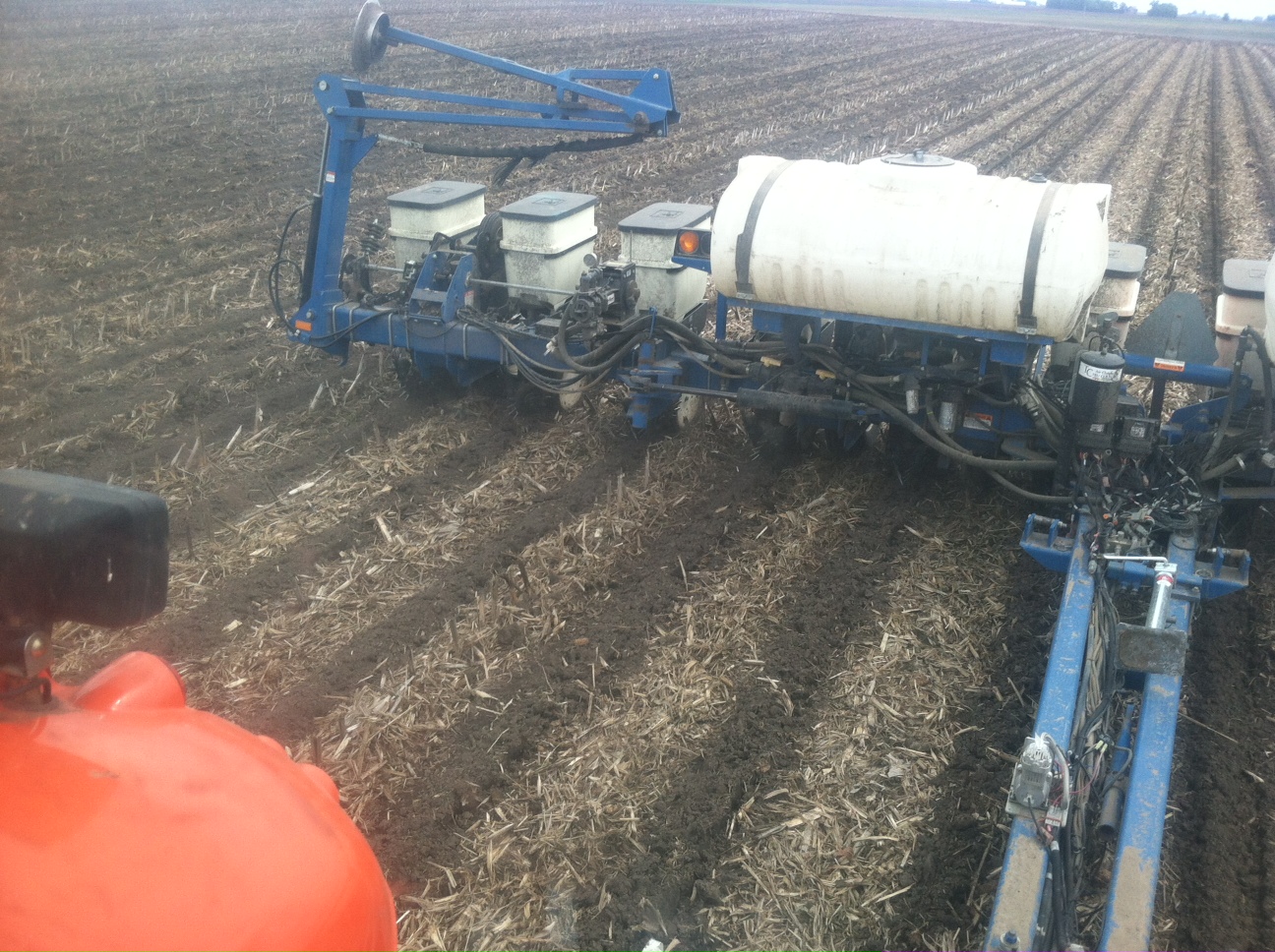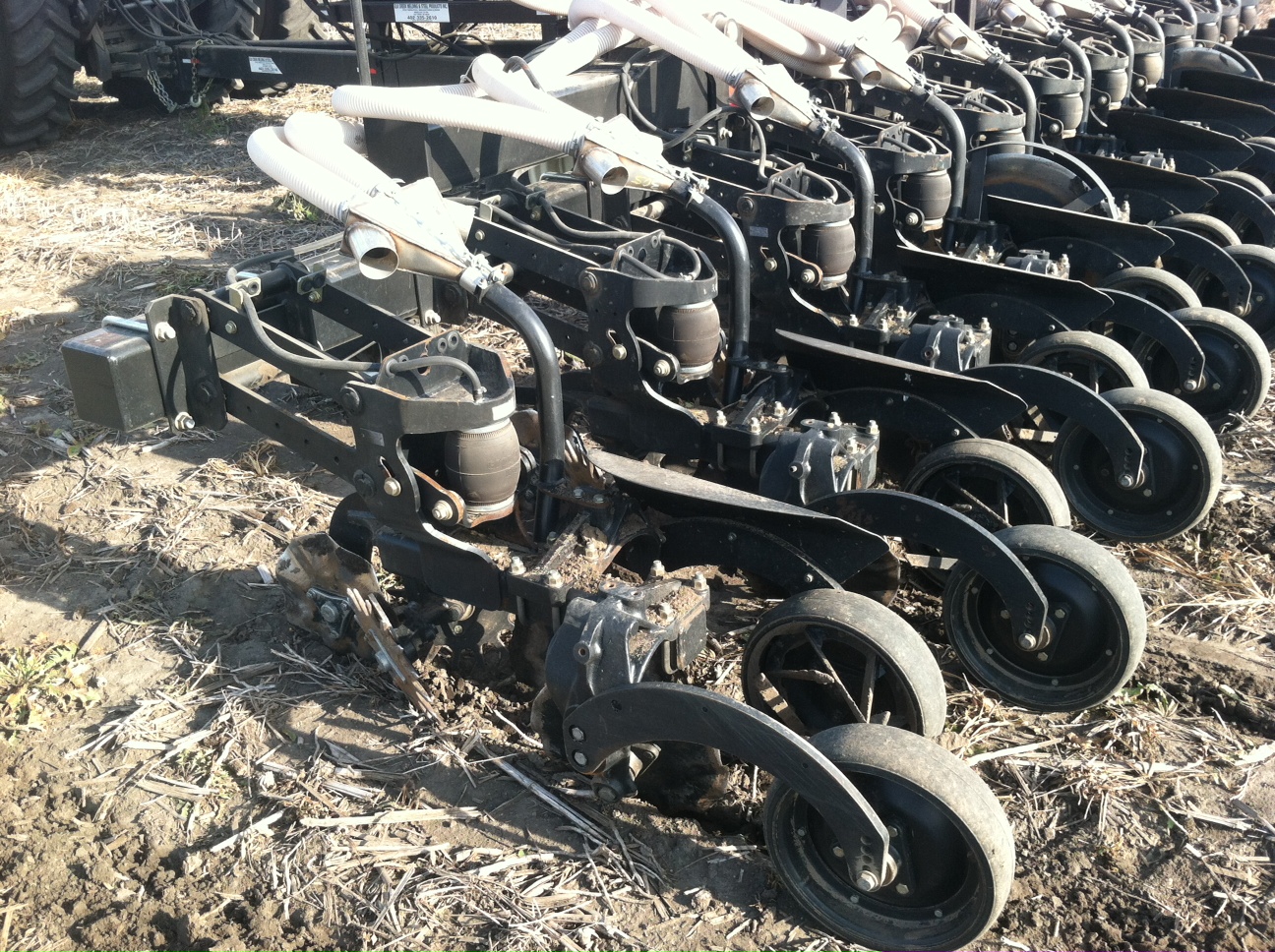Implement guidance and grid sampling helps Bonde Farms improve strip-tilled soybean emergence on sidehills and fine-tune fertilizer application.
When Nate Bonde and his family in Nerstrand, Minn., adopted strip-till 4 years ago, they were already familiar with the value conservation-tillage practices brought to their farm.
Since the mid-1970s, Bonde Farms had used ridge-till across 850 acres of corn and soybeans in the southeastern part of the state. They’d had good success with ridge-till as a way to limit erosion on sidehills and rolling ground, but wanted to be more efficient with tillage practices, Bonde says.
“We used to do two cultivating passes, which took up a lot of time in the field,” he says. “If it started raining we’d get behind. With strip-till, we make our pass and then plant, so we’re saving time and fuel.”
A Focused Approach
Bonde farms with his father, Bill, and his two cousins, Gary and John. They strip-till all their corn, along with 300 acres of soybeans.
With nearly 4 decades of ridge-till under their belt, the transition to strip-till was relatively smooth. But they viewed the move as an evolution to a more flexible system for fertilizer application, and a better way to prepare soil for planting.
The Bondes build their strips in spring with a 12-row toolbar with Dawn Pluribus strip-till row units. This past fall, for the first time, they ran a six-row DMI 2500 no-till ripper through corn ground ahead of soybeans to build a small ridge.
The unit has a 6-inch shank with an arrowhead point, an opening coulter in front and berm-tucker wheels in back to prevent an exposed trench.
“We decided to try the unit to handle corn residue, because in previous years we weren’t getting as good a soybean stand,” Bonde says. “This spring, we noticed that the top part of that ridge dried out faster, and it was easier to plant into, because the residue was cleared even before we built the strips.”
FERTILIZER FLEXIBILITY. This spring, Nerstrand, Minn., strip-tiller Nate Bonde added a Montag twin-bin dry fertilizer cart to his family’s 12-row strip-till rig and applied 300 pounds per acre of urea and a 75-pound-per-acre mix of monoammonium phosphate (MAP) and sulfate of potash (SOP).
Soybean stands have looked healthier this summer, and Bonde says they will run the no-till ripper again this fall after harvest, with a new wrinkle — an application of phosphorous and potassium.
Historically, the Bondes haven’t applied any fertilizer in the fall, outside of a few thousand gallons-per acre of hog manure on about a third of their fields.
But this year they purchased a Montag twin-bin dry fertilizer cart, which they used to apply about 300 pounds per acre of urea, and a 75-pound-per-acre mix of monoammonium phosphate (MAP) and sulfate of potash (SOP) in spring with the Dawn units.
“We’re going to do more application in the fall, because with the Montag, we’ll have more options,” Bonde says. “Now, we’ve got four different times we can apply nitrogen. We can do fall anhydrous, spring urea, sidedress 32% with the planter and sidedress with anhydrous, too. Our window of opportunity is much larger.”
Soil test results will dictate when and how much nitrogen they apply for corn, but in the past they’ve applied about 4 gallons per acre of 32% with their 12-row Kinze 3200 planter.
Mapping Success
At this point, Bonde isn’t sure how much phosphorous and potassium will be applied in fall, but the goal is to diversify and reduce applications, based on what certain fields require.
Last year, the Bondes began using Trimble’s Farm Works software and mobile soil-testing unit to grid sample in 4-acre units in cornfields, with the goal of getting a more precise picture of soil health.
PRECISE PLANTING. The Bondes build their strips in spring prior to planting with a 12-row Kinze 3200 planter. In the past, they’ve sidedressed 4 gallons per acre of 32% nitrogen, but plan to refine fertilizer application through grid sampling in 4-acre plots.
Although they started soil sampling when they moved to strip-till, the Bondes hadn’t extensively analyzed their soil.
“What we found out right away with grid sampling was that on manure ground, where we thought our nutrient levels would be fine, we were actually lower than we expected,” Bonde says. “We’ve had pretty good yields the last 3 years, and they took a lot out of the soil. So we want to identify where we need to boost fertilizer application.”
One challenge that motivated the Bondes to use grid sampling is the highly variable soils on their farm, with areas of clay and soils with a silt cap of loess. The top 9 inches tend to be highly productive, but further down is heavier soil that is harder to penetrate.
“No two 80 acres are the same around here,” Bonde says.
The plan is to get a baseline reading of nutrient levels and tweak application amounts as needed, rather than waste fertilizer on areas that are saturated with nitrogen, or other nutrients.
“It’s important to not only collect information from grid sampling, but do something with it,” he says. “If we’re not going to change the way we farm, why do it? If we are going to put a straight product on, it’s not worth the money to grid sample.”
Better Steering
Another tool the Bondes recently added to their strip-till arsenal is implement guidance on their Dawn units. They purchased Trimble’s TrueGuide Implement Control system.
SUCCESSFUL COMBINATION. Since moving from ridge-till to strip-till, the Bondes have used Dawn Pluribus row units to build spring strips, but for the first time last fall, also ran a six-row DMI 2500 no-till ripper to help the soil dry out faster in spring.
We haven’t played with it a lot, but we used it this spring and we were a lot more consistent with staying on those strips with the planter,” Bonde says. “We’ve got a lot of sidehills, and we wanted to minimize the drift we were seeing.”
In previous years, Bonde says, they struggled with hitting the target with their seed, especially on sidehills, because the planter would often drift a couple inches behind their Agco tractor.
This led to inconsistent emergence and yields in those areas, along with wasted time in the field. It remains to be seen how yield totals this fall on sidehills will compare to year’s past, but Bonde is optimistic implement guidance will prove to be a worthwhile investment.
“We’ve seen better stands in those areas, and we’ve eliminated some of the variability,” he says. “Implement guidance is just another part of developing our strip-till system to efficiently use fuel, fertilizer and our time.”









